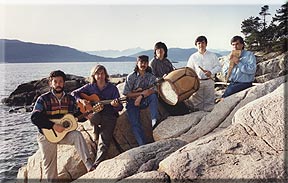Like gold that I cast
Like jade that I pierce.
Like beads that I string,
That is my song.
Netzahualcoyotl (Texcoco 1402-1472)
Latin American folk music is a complex legacy derived from three main
sources: native, European and African. Before the arrival of Europeans,
the native cultures developed their music based on a variety of wind
instruments such as bone flutes, conchas, quenas, rondadores, zamponas,
tarkas, and percussive instruments made from carved tree trunks, turtle
shells, deer hooves and antlers, dry fruits, seed pods, and butterfly
cocoons. Music was usually associated with religious ceremonies and
many of the instruments were considered sacred. At the end of the fifteenth
century, the arrival of the European conquistadores brought stringed
instruments such as guitars, mandolins, lutes, violins and harps, and
inspired the creation of new stringed instruments. The one-string musical
bow, once the only stringed instrument in Latin America, was replaced
by new forms of guitar, such as the charango in the Andes, the cuatro
in Venezuela, the tiple in Colombia, the jarana and vihuela in Mexico,
the tres in Cuba, and a variety of new mandolins, violins and harps.
The Africans brought as slaves introduced an immense array of percussive
instalments. Some, like the maracas, guiro and cabasa, remained unchanged.
Marimbas evolved into a variety of local forms, particularly in Central
America and Mexico. The African drums became bongos, timbales and congas
in Cuba and surdos and atabaques in Brazil. In Peruvian ports, packing
crates were substituted for drums, which were forbidden, and developed
into the modern day cajon. In countries with large native populations,
like Guatemala, Bolivia, Peru and Ecuador, the native influence was
strongest until recently. In countries with large mestizo (mixed) populations
such as Mexico, Venezuela and Colombia, the three musical legacies were
combined into new forms. In the music of Cuba, Brazil and the Caribbean,
the African influence prevailed.
Our group Ancient Cultures resides in Vancouver, Canada, but
our cultural and musical backgrounds vary. Alberto San Martin,
Carlos Cortes and Angel Araos all come from Chile but
their musical roots are in jazz, folk and classical music respectively.
Eito Garcia comes from Guatemala and arranges and plays salsa
music. Edward Henderson is from Vancouver Island, He grew up
playing folk and classical music and has worked extensively in theatre
and film. Carlos Galindo Leal comes from Mexico and has many
years experience playing Spanish and Latin American folk music. Through
Ancient Cultures we celebrate our diverse cultural heritage,
bringing together influences and instruments from many parts of Latin
America.
















